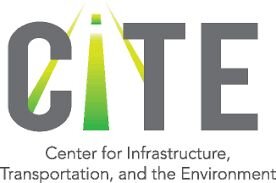Members
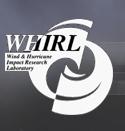 |
Wind and Hurricane Impact Research Laboratory (WHIRL)
|
| Outline The WHIRL is dedicated to the study of the effects and impact of wind storms, including hurricanes, tornadoes, and thunderstorms, and other related meteorological hazards (e.g. flooding, and storm surges) on the natural environment and man-made structures. The laboratory involves a multidisciplinary team of engineers, scientists, and business experts, who take advantage of a geographic location in the heart of Florida Space Coast, to serve the needs of industry, government, and the public in wind hazard mitigation. ObjectivesThe three main objectives of the WHIRL are:
[detail] --> |
|
USA - CHCMR, Missouri University of Science and Technology
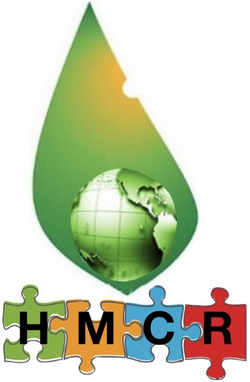 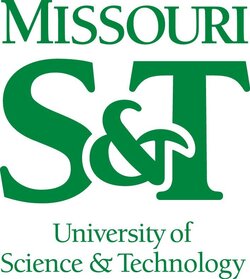 |
Center for Hazard Mitigation and Community Resilience, Missouri University of Science and TechnologyMissouri |
| Outline Through transdisciplinary research and education, we are dedicated to mitigating the harm from hazards and building resilient civil infrastructure (e.g., buildings, bridges, roads, railways, and electric power transmission lines) and social infrastructure (e.g., extreme weather warning communication, risk awareness and funding for community resilience). Hazards include, but not limit to, extreme winds and storms (e.g. tornadoes, hurricanes, storm surge and downbursts), floods, earthquakes, extreme heat, wild fire, and man-made hazards.
[detail] --> |
|
USA - Center for Public Health Disaster Science, New York University
 |
Center for Public Health Disaster Science , New York University (NYU)New York |
|
Outline The Center's Investigators conduct original research on population preparedness, response, and recovery; disaster impacts along the life-course; systems approaches to disaster studies; risk communication and decision-making; and the study of resilience. The Center serves as a resource to affected and at-risk communities; to policy-makers and public officials; to disaster and public health scholars; to the media; and to the public health students and the larger academic community at New York University. The current research portfolio of the Center includes NIH-funded work on long-term disaster recovery, NSF-funded work on the role of belief systems in vaccine-related decision-making, and CDC-funded work on developing performance measures of public health preparedness, as well as ongoing research on the impacts of COVID on the New York State health workforce. [detail] --> |
|
USA - Center for Natural Hazards Resilience, The University of North Carolina at Chapel Hill (UNC)
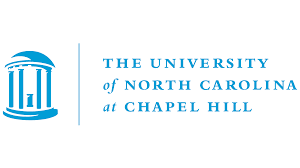 |
Center for Natural Hazards Resilience, The University of North Carolina at Chapel Hill (UNC)Chapel Hill, NC |
| Outline The mission of the Coastal Resilience Center of Excellence (CRC) is to conduct research and education to enhance the resilience of the nation's people, infrastructure, economies and the natural environment to the impacts of coastal hazards such as floods and hurricanes, including the effects of future trends. The University of North Carolina at Chapel Hill leads the CRC, made possible through a five-year, $20 million grant from the Department of Homeland Security (DHS) Science and Technology Directorate, Office of University Programs. The CRC is a consortium of universities, private companies, and government agencies focused on applied research, education and outreach addressing threats to coastal communities due to natural hazards. [detail] --> |
|
USA-Global Resilience Institute, Northeastern University
Global Resilience Institute, Northeastern UniversityBoston, MA |
|
|
Outline GRI accomplishes its mission by facilitating new interdisciplinary research collaborations; working in close partnership with industry, government, communities, and non-governmental organizations; and engaging in external outreach to inform, empower, and scale bottom-up efforts that contribute to individual and collective resilience. GRI in collaboration with the Fraunhofer Ernst-Mach-Institut, has founded the Global Resilience Research Network (GRRN), a membership network of leading universities, institutes, non-profit organizations, and companies engaged in resilience research that informs the development of novel tools and applications. By connecting resilience researchers with practitioners internationally, GRRN helps to ensure that global expertise is leveraged in order to meet the urgent need for devising interdisciplinary solutions that are practical and scalable. |
|
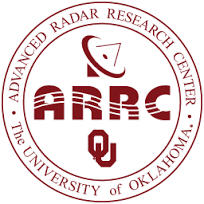 |
Advanced Radar Research Center
|
| Outline Welcome to the Advanced Radar Research Center (ARRC) at the University of Oklahoma! The ARRC is now more than 10 years old, and in that time has grown from a small group of energetic faculty and students into the largest academic radar program in the nation with well over 100 members. We focus on interdisciplinary education, leveraging a nationally ranked meteorology program and aggressively growing engineering departments. Our School of Electrical and Computer Engineering, for example, has moved up 25 spots in national rankings in just the last year, largely due to a significant growth in radar and applied electromagnetics. The ARRC resides in the state-of-the-art Radar Innovations Laboratory - a 35,000-sqft working laboratory dedicated to innovations in radar technology and science. With the complete support of the university administration, the ARRC is poised to become the go to place for all things radar! [detail] --> |
|
USA - CITE - Rensselaer
|
|
Center for Infrastructure, Transportation, and the Environment (CITE), Rensselaer Polytechnic Institute (RPI)
|
| Outline The Center for Infrastructure, Transportation, and the Environment (CITE) is a national and international leader in research, education, outreach, and technology transfer in the areas of infrastructure, transportation, and their links to the environment. The Center for Infrastructure, Transportation, and the Environment (CITE) is known generally for sustainable freight system and freight transportation planning research, as well as transportation planning, design and operations, modeling and simulation, disaster response logistics, traffic signal system control, and transportation-related behavioral research. The research can be organized into three focus areas: freight research, disaster response, and smart transportation systems. [detail] --> |
|
Rensselaer Polytechnic Institute (RPI)
|
|
| Outline With 7,900 students and more than 100,000 living alumni, Rensselaer is addressing the global challenges facing the 21st century--to change lives, to advance society, and to change the world. At the same time, we continuously are reinventing Rensselaer, and strengthening our people, platforms, programs, and partnerships in order to anticipate the future and enable the brilliant men and women who learn and teach here. [detail] --> |
|
Center for Risk and Economic Analysis of Terrorism Events (CREATE)
|
|
| Outline The National Center for Risk and Economic Analysis of Terrorism Events (CREATE) was established in 2004 as the first university-based Center of Excellence (COE) funded by the U.S. Department of Homeland Security (DHS) Science and Technology Directorate (S&T) Office of University Programs (OUP). CREATE is headquartered at the University of Southern California (USC) where it is jointly housed in the Viterbi School of Engineering and the Sol Price School of Public Policy. It has research affiliates at several other institutions, both in the U.S. and abroad. The Center contributes university-based research to make the United States more secure by taking a longer-term view of scientific innovations and breakthroughs and by developing the future intellectual leaders in homeland security. CREATE has also been very successful in transitioning and disseminating the results of its research to operational units of DHS and other stakeholders.
[detail] --> |
|
USA-Statewide California Earthquake Center (SCEC), University of Southern California
 |
Statewide California Earthquake Center (SCEC)
|
| Outline The Statewide California Earthquake Center (SCEC) was founded as a Science & Technology Center on February 1, 1991, with joint funding by the National Science Foundation (NSF) and the U. S. Geological Survey (USGS). SCEC graduated from the STC Program in 2002 and has since been funded as a stand-alone center under cooperative agreements with both agencies, and additional support from other agencies, private foundations, and public utilities. The SCEC community comprises one of the largest research collaborations in geoscience, with more than 1000 active participants on SCEC projects, more than half which participate in SCEC's Annual Collaboration Meeting. SCEC is organized as a consortium of "core institutions", which commit sustained support, and a much larger set of "participating institutions", which join through requests initiated by scientists who wish to participate in SCEC. SCEC's core research program is investigator-driven and open to anyone who is willing to submit a qualified project plan for peer review. The core resources are allocated through an annual planning process that involves input from the entire SCEC community, as well as counsel from an external Advisory Council and the sponsoring agencies. About two-thirds of the SCEC science budget goes to students and early-career scientists engaged in investigator-initiated research. The roster changes constantly as new people and institutions become involved. The Center's working groups, workshops, field activities, and annual meeting enable scientists to work together over sustained periods, building "deep collaborations" and strong interpersonal networks that promote intellectual exchange and amplify the support for students and early-career scientists. SCEC encourages colleagues with creative ideas about earthquakes to formulate them as hypotheses that can be tested collectively. Researchers with new hypotheses are quickly brought together with experts who have observational insights, modeling skills, and knowledge of statistical testing methods. [detail] --> |
|
USA - HRRC, Texas A&M University
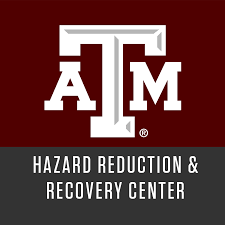 |
Hazard Reduction and Recovery Center (HRRC), Texas A&M University (TAMU)Texas |
| Outline The Hazard Reduction and Recovery Center (HRRC) studies hazards and how they affect the natural and built environments and the people who live there. With a special focus on hazard mitigation and recovery, we generate research at the forefront of hazard planning. Texas A&M University's Hazard Reduction and Recovery Center (HRRC) is an interdisciplinary research effort. Established in 1988, the HRRC was the first research center dedicated to vulnerability reduction and long-term recovery in the nation. Today, we are one of only two United Nations (UN-OCHA) Collaborative Centers in the world. We serve OCHA as a research and consultant agency with particular emphasis on national disaster plans and their implications for future development. [detail] --> |
|
USA - WHIP-C-Texas Tech University
 |
Wind Hazard and Infrastructure Performance Center, Texas Tech UniversityTexas |
| Outline WHIP Center will conduct research to support industries and government agencies that are interested in developing new solutions and products to reduce the impact of hurricane, tornado and severe wind events on buildings and infrastructure while educating the next generation of professionals. The WHIP Center's mission is to pursue research of interest to industry and government agencies to enhance the resiliency of buildings and infrastructure to extreme windstorms such as hurricanes and tornadoes. [detail] --> |
|
USA - Geologic Hazards Science Center, U.S. Geological Survey
 |
Geologic Hazards Science Center, U.S. Geological SurveyColorado |
| Outline The Geologic Hazards Science Center (GHSC), on the Colorado School of Mines campus, is home to the National Earthquake Information Center (NEIC), many scientists in the Earthquake Hazards Program and Landslide Hazards Program, as well as the Geomagnetism Program staff. Created by an act of Congress in 1879, the U.S. Geological Survey has evolved over the decades, matching its talent and knowledge to the progress of science and technology. The USGS is the sole science agency for the Department of the Interior. It is sought out by thousands of partners and customers for its natural science expertise and its vast earth and biological data holdings. [detail] --> |
|
USA - Center for Coastal Studies, Virginia Tech
 |
Center for Coastal Studies, Virginia Polytechnic Institute and State UniversityVirginia |
| Outline The Center for Coastal Studies' mission is to inspire societally relevant solutions to the complex challenges emerging in the coastal zone. Nearly half of the world's population lives in the coastal zone and is, therefore, exposed to impacts of terrestrial and marine processes. Currently, six in ten Virginians live in the coastal zone. Sea-level rise, urbanization and other stressors threaten important nodes of the global economy, critical infrastructure for civil and national security, and fragile ecosystems. Human and ecosystems well-being, economic prosperity and security are interdependent and form a complex coupled network, defining a nexus of resource limitation, opportunity, and vulnerability from which knowledge crucial for the design of sustainable solutions can emerge-the Center for Coastal Studies overarching goal. The Center for Coastal Studies promotes a vibrant future for the world's coastal zones through enabling, facilitating, and rewarding transdisciplinary research, education, and engagement. [detail] --> |
|
 |
Vietnam National University (VNU)Hanoi |
| Outline Throughout its over 100 years of development, being aware of responsibilities toward global issues, VNU has affirmed its position as Vietnam's top comprehensive multi-disciplinary academic and research center of excellence based on international standards. With modern comprehensive higher education management, VNU has been striving to establish itself as a leading institution in Vietnam and in the region based on the philosophy "Excellent through Knowledge" and by promoting six core values: high quality, creativity, innovation, integration, responsibility to society, and sustainable development. An important task of VNU is to provide the country with high quality human resources to meet the developmental needs of the society, thus making important contributions to the progress of Vietnam and within this region and the world. VNU has created an impressive cultural community, a harmonious academic environment in which lecturers, scientists and students are working together in an open and friendly manner. [detail] --> |
|
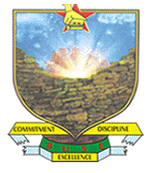 |
Bindura University of Science EducationBindura |
| Outline Since its inception, the University is operating from the Public Service Training Centre, on a temporary basis, pending the construction of the Main Campus. This is being built on a 159 hectare plot about two kilometres from the town centre along the Bindura - Mount Darwin Road. The Faculty of Science stirves to bring empirically sound, disaster theory, measures and practices to bear on the real-world problems demanding disaster risk reduction, including the challenges of implementing the Sendai Framework for Disaster Risk Reduction in Africa. The Faculty of Science is committed to offering high quality programmes and strives to recruit and produce scholars in the field of Sciences. We are committed to helping our students gain excellent training that includes a strong foundation in the Sciences and the freedom to shape their own degree paths. The Faculty is also committed to contributing to the well-being of the society and the improvement of the quality of the environment through Science teaching, learning and research. It seeks to contribute to the advancement of multidisciplinary research that will enhance the development of the nation and the region at large and to provide an environment where quality teaching and research in Science can flourish. It endeavours to be a hub of knowledge and a beacon of excellence in the pursuance and creation of opportunities that render scientific service to the University and the surrounding communities. [detail] --> |
|

